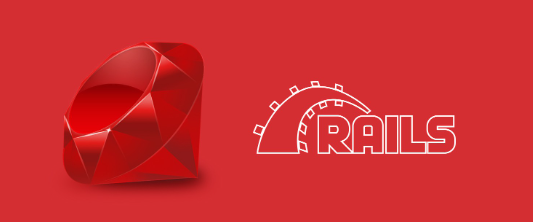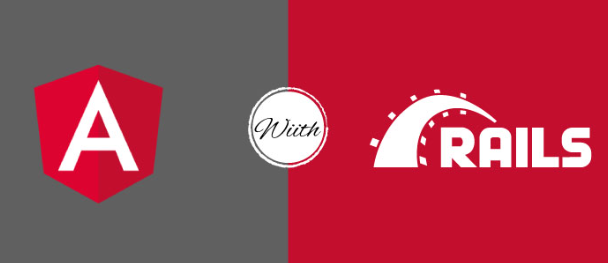
In this guide, we will cover everything you need to know about integrating Angular 6 with Ruby on Rails using Webpacker. We'll explore the benefits of using Angular 6 with Ruby on Rails, the steps involved in setting up your project, and some best practices for working with this combination of technologies.
Angular JS is a frontend and open-source application framework maintained by Google and released in 2010. On the other hand, Ruby on Rails is used in different industries to create web services and apps. This notable web framework helps make app development quicker with small teams.In fact, RoR is a unique language that covers both the front and back end. However, if you’re searching for a web-based development app framework for your following web app project, it would be better to consider the mix of Angular and Ruby on Rails.
Alt text - Angular 6 with Ruby on rails | A perfect Combination To Build Modern Web-based Apps in 2023
Why Angular with Rails?
Angular is a popular front-end framework that is known for its ability to build robust, dynamic applications. Rails, on the other hand, is a powerful back-end framework that offers a lot of convenience in terms of database management, routing, and other server-side tasks. Combining these two frameworks can give you the best of both worlds: a flexible and powerful front-end, backed by a reliable and efficient back-end.
When it comes to choosing the right framework for your web development needs, there are many options available. One possibility that you may want to consider is using Angular with Rails. By doing so, you can take advantage of the strengths of both of these powerful tools, resulting in a more robust and comprehensive solution.
Angular is a client-side framework that provides a variety of features to help you build dynamic and interactive web applications. It offers many benefits, such as two-way data binding, dependency injection, and a modular architecture. These features allow you to create complex user interfaces with ease, while also improving the maintainability and scalability of your code.
On the other hand, Rails is a server-side framework that provides a solid foundation for building web applications. It emphasizes convention over configuration, which means that you can get started quickly and efficiently. It also includes many built-in features, such as routing, database integration, and security measures, that can simplify the development process.
When you combine Angular with Rails, you can leverage the strengths of both frameworks to create a more complete solution. For example, you can use Angular to build a powerful front-end that communicates with a Rails back-end through a RESTful API. This can allow you to create a fast and responsive user interface that can handle complex interactions and data manipulation. Additionally, Rails can provide a secure and scalable infrastructure for your application, ensuring that it can handle high traffic and large data sets.
Overall, choosing Angular with Rails can be a smart choice for your web development needs. By using these two powerful tools together, you can create a robust and comprehensive solution that can meet the needs of your users and your business.
Setting Up Your Project
To get started with Angular 6 with Ruby on Rails, you'll need to set up your project in a specific way. Here are the steps involved:
1. Create a new Rails application using the following command:
sql code
rails new myapp --webpack=angular
This command will generate a new Rails project with Webpacker configured for use with Angular.
2. Install the necessary dependencies:
sql code
yarn add @angular/core @angular/platform-browser @angular/platform-browser-dynamic @angular/common
3. Create a new Angular module:
arduino code
ng generate module app
4. In your Rails layout file, add the following code:
arduinoCopy code
<%= javascript_pack_tag 'application' %>
This will include your Angular application code in your Rails project.
5. Finally, start your Rails server and run the following command:
bashCopy code
bin/webpack-dev-server
This will start the Webpack dev server and allow you to make changes to your Angular code in real time.
Best Practices

Now that your Angular 6 with Ruby on Rails project is set up and running, it's important to follow some best practices to ensure your code is clean, efficient, and maintainable. Here are some tips to keep in mind:
Use a Consistent Code Style
Consistency is key when it comes to writing clean, maintainable code. Make sure you and your team agree on a code style and stick to it throughout the project.
Break Your Code into Reusable Components
Angular is all about building reusable components. Make sure you're breaking your code into small, reusable pieces that can be easily maintained and reused across your project.
Optimize Your Code for Performance
Angular is a powerful framework, but it can also be resource-intensive. To ensure your app runs smoothly, make sure you're optimizing your code for performance. This can include things like lazy loading, caching, and minimising HTTP requests.
Test Your Code
Testing is an important part of any software project. Make sure you're writing tests for your Angular and Rails code to ensure everything is working as expected.
Conclusion
In this guide, we've covered everything you need to know about integrating Angular with Rails 6 using Webpacker. We've explored the benefits of using these two frameworks together, the steps involved in setting up your project, and some best practices for working with this combination of technologies. With this knowledge, you'll be able to create powerful, dynamic applications that leverage the strengths of both Angular and Rails.
At PLOVER, we take pride in offering a diverse range of remote work options, and we understand that finding the right job can be a challenging task. That's why all the jobs listed on our platform are verified by us to ensure that they meet our strict criteria. We make sure that each job is remote, pays in USD, and meets our working conditions, so you can focus on finding the best fit for you.
[Subscribe now!](<https://plover.substack.com/p/plover>)
final thought


by Harsh Verma
final thought

